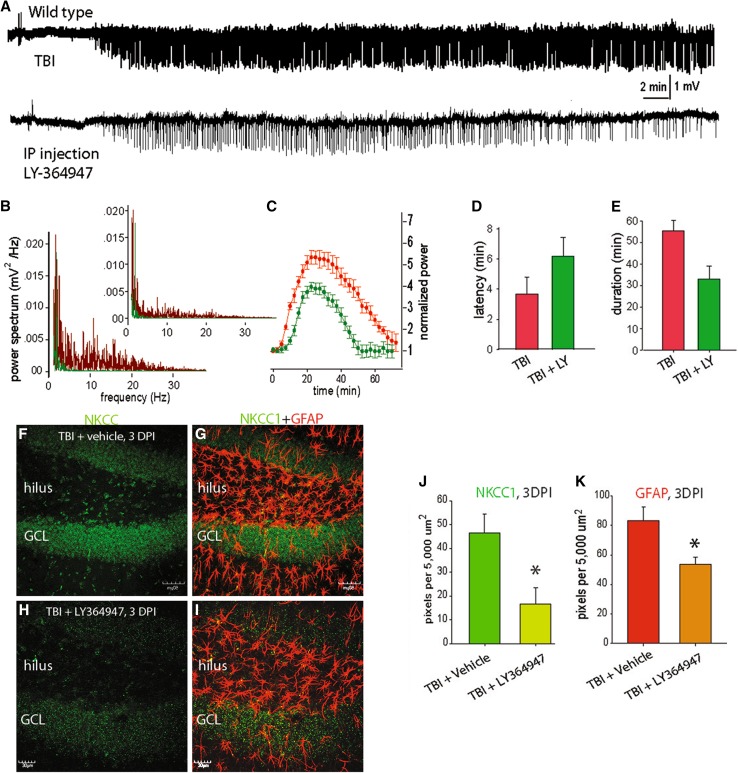Fig. 6.
TGF-β blocker LY-364947 blocked the seizure and up-regulation of NKCC1 after TBI. a Representative traces of EEG recordings show that i.p. injection of TGF-β blocker LY-364947 blocked the seizures induced by TBI. b Power spectrum analysis of EEGs. c Normalized power spectrum analysis of EEG recordings. d, e Comparisons of the latency and duration of seizures induced by PTZ in addition to TBI. f–i Representative confocal micrographs of a hippocampi stained with antibody for NKCC1 (green; f, h) and merged with GFAP (red; g, i) to illustrate that that the NKCC1 expression appears to be reduced at 3 days after injury in the LY-364947-treated mice (h, i), compared with vehicle-treated mice (f, g). Note that the intensity of GFAP-labeled astrocytes also appears to be lower in the mice treated with LY-364947. These changes are most evident in the granule cell layer (GCL) and hilus, and there appears to be minimal overlap between the NKCC and GFAP staining. j Graph of the mean optical density of NKCC1-labeling in the hippocampal dentate gyrus at 3 days post-injury (DPI) showing significantly less staining in mice treated with LY-364947 compared with vehicle-treated mice (*P < 0.0001). k Graph of the mean optical density of GFAP-labeling in TBI + vehicle mice and TBI + LY-364947 mice confirmed the observation of significantly decreased GFAP-labeling, suggesting a possible decrease in astrocytosis and/or astrocyte hypertrophy following treatment (*P < 0.001). Scale bar f, g 50 µm; h, i 30 µm

